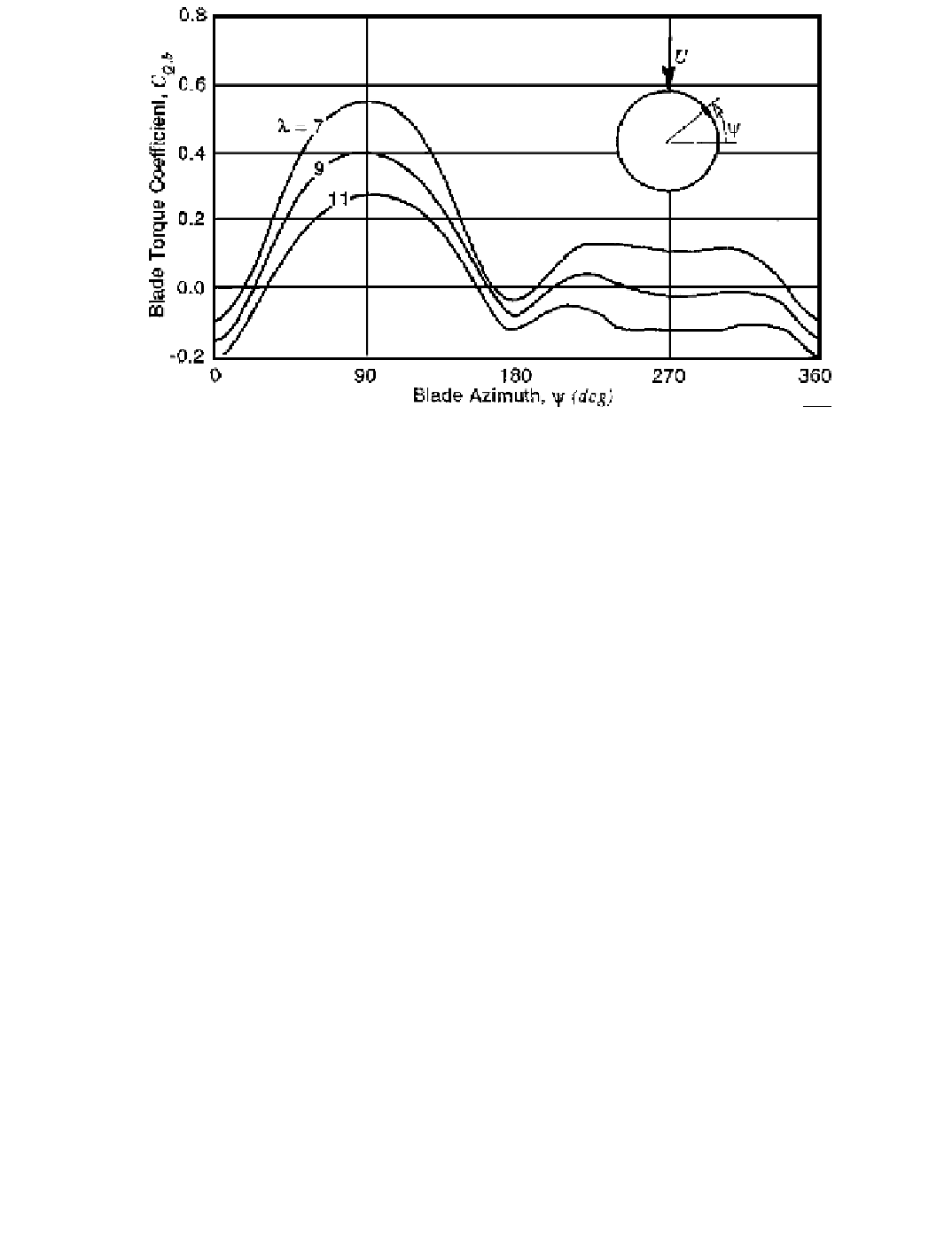Environmental Engineering Reference
In-Depth Information
Figure 5-41. Typical variations in torque coefficient with blade azimuth or “torque
ripple” produced by a single VAWT blade.
torque ripple is smoothed significantly when the individual torques of two or more blades are
added together, because of their phase differences.
Rotor Solidity Effects
The solidity of a VAWT rotor can be changed by changing the number of blades or the
blade chord dimensions. Current VAWTs are two-bladed machines, the two-bladed configu-
ration being lighter and having fewer joints than a three-bladed rotor. Little has been done
to determine the effect of blade number while holding other parameters constant. The most
significant difference between two- and three-bladed rotors is that the rotor torque ripple,
which has a distinctive twice-per-revolution oscillation for a two-bladed VAWT, is almost
eliminated in a three-bladed rotor. With little else examined for the aerodynamics of three-
bladed rotors, the subject of the effects of solidity on rotor aerodynamics is focused here on
changes in blade chord.
For a VAWT, solidity is expressed in two different ways. The first is the traditional way,
as the ratio of the blade planform area to the rotor swept area. Such a determination requires
detailed knowledge of blade chord
vs.
blade length and the swept area of the rotor, quantities
which are tiresome to determine. A second expression for solidity, not equal to the first, is
the term
Bc
max
/
R
, where
c
max
is the blade equatorial chord. Numerically, the second parameter
is usually within 20percent of the conventional solidity.
Figure 5-42 shows the effect of changes in
Bc
max
/
R
on the dimensionless power of a
VAWT for various advance ratios. The geometry of the VAWT is that of the Sandia 17-m
rotor described earlier, except for the chord dimension which is varied. The changes in rotor
solidity (as measured by
Bc
max
/
R
) affect rotor performance in two ways. Largest of the effects
is the fact that the increased chord results in larger aerodynamic forces and therefore in higher
power. Although the axial induction increases and reduced local wind speeds offset some of
the force increase caused by larger chords, the net effect of increasing the chord is an increase
in power coefficient, except at very low advance ratios.

Search WWH ::

Custom Search